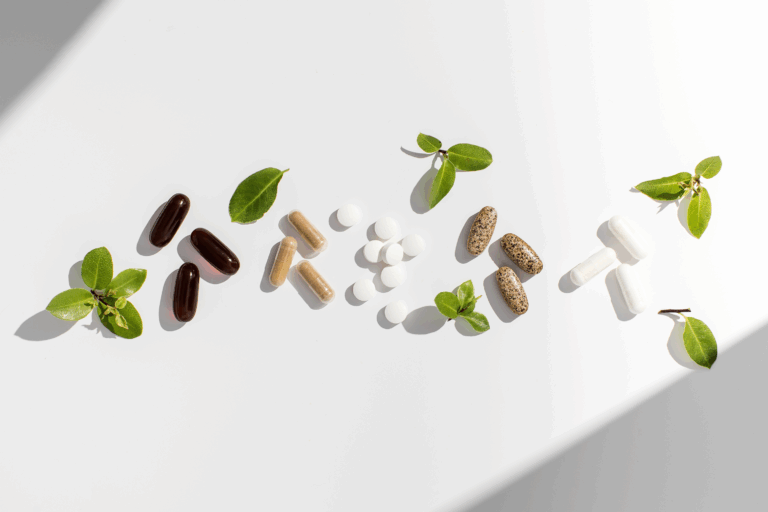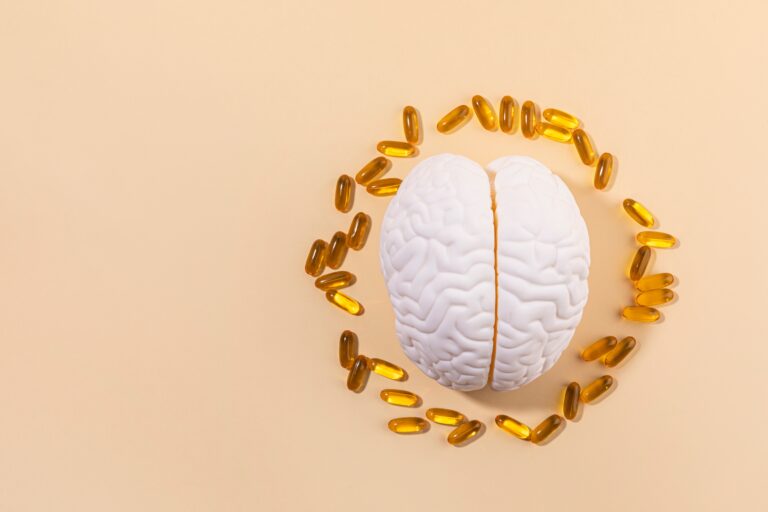The Science of a Gut Feeling: The Gut-Brain Axis
The Science of a Gut Feeling: The Gut-Brain Axis
What is the Gut-Brain Axis?
That gut feeling that creeps up at times is more accurate than most people realize. The gut-brain axis is a system of bi-directional communication between the gastrointestinal (GI) tract and the brain and is responsible for monitoring physiological homeostasis.1 It connects both the emotional and cognitive areas of the brain with functions associated with the intestines including immune activation, intestinal permeability, and enteroendocrine signaling.1
Bi-directional communication between the gut and brain is largely carried out by the vagus nerve, which carries a wide range of signals between the gut and brain and is involved in many bodily processes ranging from swallowing to heart rate regulation to digestion.1 Other systems also contribute to the gut-brain axis, including the sympathetic nervous system, enteric nervous system, parasympathetic nervous system, endocrine and immune systems.1 The gut-brain axis is being increasingly studied for its role in the development, but also the therapeutic treatment, for gastrointestinal and psychiatric disorders including inflammatory bowel disease, depression, and post-traumatic stress disorder.1
The role of gut microbiota in gut-brain axis
The gut microbiome is an extremely important part of the GI tract, and as such, a critical player in the gut-brain axis. Bacteria in the gut microbiome synthesize and produce important metabolites that affect the brain, including the neurotransmitters dopamine, serotonin, GABA, acetylcholine, and histamine.2 These metabolites can signal at the local level or travel to the brain where they affect signaling and function in brain cells.3 Other components of the gut microbiome, including fungi, also contribute to the communication along the gut-brain axis.4
Bacteria in the GI tract also synthesize compounds that may act as neuro-mediators in the brain, including short-chain fatty acids (SCFAs), aromatic amino acids, and bile acids. SCFAs indirectly affect the gut-brain axis through inducing the release of several gut hormones, including leptin, which interact with the vagus nerve and receptors in the brain.2 SCFAs also contribute to the maintenance of physical barriers including the intestinal barrier, via tight junctions, as well as the blood brain barrier.2 Tight junctions are critical to the maintenance of intestinal permeability, preventing pathogens from entering the bloodstream and causing immune and inflammatory responses, including neuroinflammation.5
Imbalance in the composition of the gut microbiota, called dysbiosis, can affect the gut-brain axis and peripheral organs. Unhealthy diet, stress, infections, and antibiotics contribute to dysbiosis, leading to altered SCFA production and gut permeability, which induces systemic inflammation, increases blood brain barrier permeability, and ultimately results in neuroinflammation, an important step in the development of neurological conditions such as depression and Alzheimer’s disease.2 Research studies in humans have demonstrated distinct differences in microbiota composition in individuals with neurological diseases, including dementia, Parkinson’s disease, multiple sclerosis, major depressive disorder, and autism spectrum disorder.2,6
Gut hormones
The gut-brain axis is heavily involved in the digestion process, including regulating the rate of nutrient absorption and release of gut hormones.1 Gut hormones are regulatory peptides that influence the control of food intake by regulating satiety, gastric emptying, and energy balance.1 Signaling molecules released after ingestion of food are communicated to the brain via the gut-brain axis and the brain can then signal for the release of hunger-regulating hormones, such as ghrelin and leptin, to help with the digestion process via the gut-brain axis.1
The Gut-Brain Axis and the HPA Axis
The gut-brain axis and the HPA axis (hypothalamic-pituitary-adrenal axis), which coordinates the response to stress, both involve signaling in the brain and the ability to respond to stimuli. Signaling molecules that are generated by the HPA axis in response to stress travel throughout the body and affect the gut microbiota and gut microbiota conversely influence HPA axis response to stress.1,7 The vagus nerve is critical in coordinating the connection between these axes as it is able to detect different metabolites produced by microbiota responding to stress and generate a response in the central nervous system.3 Studies investigating mice that lack a gut microbiome (germ-free mice) have found an increase in anxiety-related behaviors, deficits in learning and memory, and a maladaptive stress response.8,9 Consequently, maintaining a rich, diverse microbiome helps facilitate gut-brain axis function and also promotes the proper signaling of the HPA axis.3
Because the HPA axis and gut-brain axis are closely connected, improper activation of the HPA axis affects the gut-brain axis. Dysregulation of the HPA axis can alter the composition of the gut microbiome, negatively affecting intestinal barrier integrity, and negatively influence the metabolism of tryptophan metabolites, important modulators of the gut-brain axis.10 Improper activation of the HPA axis can also lead to increased intestinal, systemic, and neuroinflammation.10
Disorders Related to the Gut-Brain Axis
Many psychological and emotional conditions can negatively impact gut function, impairing communication within the gut-brain axis. Studies have found that patients with neurological conditions including depression, Alzheimer’s disease, Parkinson’s disease, have an altered gut microbiota compared to healthy controls.2,3 Dysbiosis causes dysregulation of important systems including both the HPA and gut-brain axes.
The composition of the gut microbiota and diet, among other lifestyle factors, can lead to emotional balance and mood disorders. However, mood disorders and emotional balance are also linked to changes in gut microbiota and to a poor diet, which can further exacerbate the issue. The bi-directional nature of the gut-brain axis is very complex and can make it difficult to understand the fundamental cause of neurological conditions, but it also provides ways to intervene to improve the health of the gut-brain axis and the body.
Supporting the Gut-Brain Axis
Any dietary, environmental, or endogenous compound that affects the gut microbiota has the potential to affect the gut-brain axis and its downstream targets.1 External factors including exercise and dietary changes can profoundly impact the gut and brain, and ultimately brain function and mental health. In fact, changing the diet is one of the easiest ways to influence gut microbiota composition, which has a major impact on the function of the gut-brain axis.8
Probiotics
Treatment with probiotics has been shown to decrease stress-induced inflammatory responses, reducing symptoms of stress including anxiety- and depression-like behaviors.1 Probiotics may be able to restore neuroplasticity in certain areas of the brain as well as restore intestinal barrier integrity and help regulate the HPA axis.10 Probiotics with anti-inflammatory effects that may be useful in treating patients with psychiatric disorders have been given a new grouping, called psychobiotics.1 Research addressing the effectiveness of psychobiotics is increasing as this field expands.
Diet and dietary components
Diets high in saturated fats, including the Standard American Diet, can lead gut microbiota dysbiosis and obesity, characterized by high levels of inflammation.8 This can lead to changes in neurotransmitter metabolism, further impacting the gut-brain axis.8 A high fat diet may also result in impaired neuroplasticity in key brain regions and impair the intestinal barrier and mucus layer of the gut.10
Conversely, the Mediterranean diet, rich in fruits, vegetables, omega-3 fatty acids, nuts, whole grains and lean protein foods, provides many dietary compounds that support both brain and gut health. A Mediterranean-style diet can reduce intestinal inflammation, cognitive impairment, and risk of certain neurological diseases.8 The inclusion of dietary fiber helps promote SCFA production, increase the diversity of the gut microbiota, and inhibit neuroinflammation induced by a high fat diet.8 Healthier diets also tend to contain more fruits and vegetables which are naturally higher in prebiotics and polyphenols.10 Polyphenols exert anti-inflammatory and antioxidant effects and can also modulate the gut microbiota.10
Dietary components can also contribute to gut-brain axis health. The amino acids tryptophan and arginine are metabolized into compounds called indoles and polyamines, indoles, leading to an increase in regulatory T cells, which promote an anti-inflammatory response by decreasing the production of pro-inflammatory cytokines.3 Additionally, herbs and medicinal plants can also promote healthy functioning of the gut-brain axis. Ginseng (Panax) root and berries contain ginsenosides and saponins and other bioactive compounds that are neuroprotective, anti-inflammatory, and promote gut microbiome balance, ultimately positively affect several components of the gut-brain axis.11
Exercise
Engaging in regular exercise, including aerobic exercises and yoga, supports the health of the gut-brain axis. Exercise improves cognition and can improve symptoms of both mood and psychological disorders.12 It can also boost the diversity of the gut microbiome, leading to an increase in SCFA production, which promotes healthy functioning of both the gut and brain, decreasing depression and anxiety and increasing HPA axis balance.12 Repetitive aerobic exercise may also improve both brain structure and function and prevent age-related brain volume loss.12 Many of these benefits are likely related to the regulation of brain-derived neurotrophic factor (BDNF), an important protein for the growth and survival of neurons in the brain. BDNF also plays a role in regulating mood disorders, learning, and memory.
The gut-brain axis connects emotional and cognitive areas of the brain with gut functions. What was once thought to be two distinct systems of the body are intricately connected and regulated, with important consequences for the rest of the body. A healthy Mediterranean-style diet, engaging in regular physical activity, and developing healthy stress management techniques can help support the gut, the brain, and communication along the gut-brain axis.
- Breit, S., Kupferberg, A., Rogler, G., Hasler, G. (2018). Vagus Nerve as Modulator of the Brain-Gut Axis in Psychiatric and Inflammatory Disorders. Front Psychiatry, 9:44.
- Doroszkiewicz, J., Groblewska, M., Mroczko, B. (2021). The Role of Gut Microbiota and Gut-Brain Interplay in Selected Diseases of the Central Nervous System. Int J Mol Sci, 22:10028.
- Castillo-Álvarez, F., Marzo-Sola, M.E. (2022). Role of the gut microbiota in the development of various neurological diseases. Neurologia (Engl Ed), 37:492.
- Enaud, R., Vandenborght, L., Coron, N., Bazin, T., Prevel, R., Schaeverbeke, T., Berger, P., Fayon, M., Lamireau, T., Delhaes, L. (2018). The Mycobiome: A Neglected Component in the Microbiota-Gut-Brain Axis. Microorganisms, 6(1):22.
- Zhang, Q., Jin, K., Chen, B., Liu, R., Cheng, S., Zhang, Y., Lu, J. (2022). Overnutrition Induced Cognitive Impairment: Insulin Resistance, Gut-Brain Axis, and Neuroinflammation. Front Neurosci, 16:884579.
- Gemikonakli, G., Mach, J., Hilmer, S.N. (2020). Interactions Between the Aging Gut Microbiome and Common Geriatric Giants: Polypharmacy, Frailty, and Dementia. J Gerontol, 76(6):1019.
- Hou, K., Wu, Z., Chen, X., Wang, J., Zhang, D., Xiao, C., Zhu, D., Koa, J.B., Wei, L., Li, J., Chen, Z. (2022). Microbiota in health and diseases. Signal Transduct Target Ther, 7(1):135.
- Dai, W., Liu, J., Qui, Y., Teng, Z., Li, S., Yuan, H., Huang, J., Xiang, H., Tang, H., Wang, B., Chen, J., Wu, H. (2022). Gut Microbial Dysbiosis and Cognitive Impairment in Bipolar Disorder: Current Evidence. Front Pharmacol, 13:893567.
- Luczynski, P., Nuefeld, K.M., Oriach, C.S., Clarke, G., Dinan, T.G., Cryan, J.F. (2016). Growing up in a Bubble: Using Germ-Free Animals to Assess the Influence of the Gut Microbiota on Brain and Behavior. Int J Neuropsychopharmacol, 19(8):pyw020.
- Herselman, M.F., Bailey, S., Bobrovskaya, L. (2022). The Effects of Stress and Diet on the “Brain-Gut” and “Gut-Brain” Pathways in Animal Models of Stress and Depression. Int J Mol Sci, 23:2013.
- St-Laurent, T., Hammami, R. (2022). The Untapped Potential of Ginsenosides and American Ginseng Berry in Promoting Mental Health via the Gut-Brain Axis. Nutrients, 14:2523.
- Dalton, A., Mermier, C., Zuhl, M. (2019). Exercise influence on the microbiome-gut-brain axis. Gut Microbes, 10(5):555.







